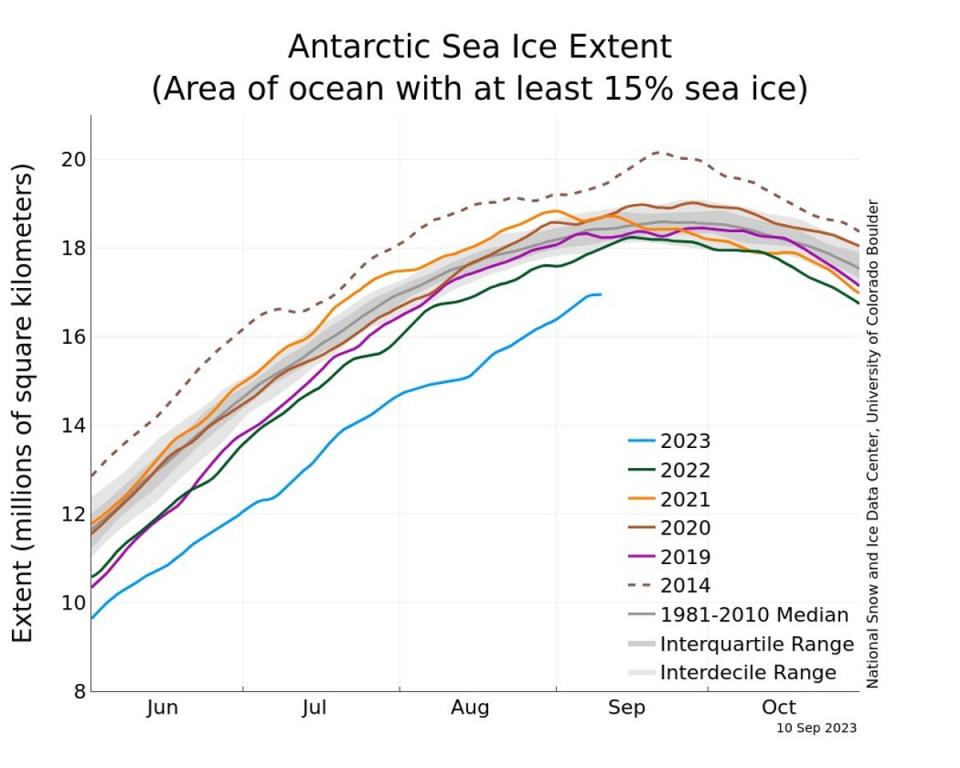Future melting of Antarctic Ice Sheet ‘unavoidable’, scientists warn
The melting of the West Antarctic ice sheet, a major contributor to global sea-level rise, appears to be an unavoidable outcome, irrespective of our future efforts to reduce planet-heating carbon pollution, a new study has warned.
The stark warning emerges from a recent study published in Nature Climate Change which dives deep into the crucial Amundsen Sea region, where ice shelves play a vital role in slowing glacier flow into the sea, stabilising the West Antarctic ice sheet.
The study sheds light on the region’s future under various future scenarios of increasing average global temperatures, including what it would look like at 1.5 degrees Celsisus, the most ideal target of the Paris Agreement, and 2C.
The world has already heated up by 1.2 degrees Celsius since the start of the Industrial Revolution and it is on the path to reach an average global temperature of 3C and above if carbon pollution does not reduce.
The led by Kaitlin Naughten of the British Antarctic Survey found that the rate at which the ocean in the Amundsen Sea is warming is three times faster than the historical average rate.
The research indicates that this warming trend in West Antarctica is already on a trajectory that cannot be reversed under various emission scenarios. However, the attempts to reduce harmful carbon pollution may help prevent the worst-case scenarios.
What this melting will mean for the world was not very well understood earlier, but Dr Kaitlin Naughten of the British Antarctic Survey (BAS) and lead author of the study said other research beyond her own points to it contributing to around one metre of sea level rise by 2100.
“It appears we may have lost control of the West Antarctic Ice Shelf melting over the 21st century,” she said.
“Our actions today likely will make a difference further down the line in the 22nd century and beyond, but that’s a timescale that probably none of us here will be around to see.”
Scientists say this study fits with existing evidence that suggests that the collapse of ice shelves in the Amundsen Sea is imminent. However, many experts also say that the benefit of buying us more years under reduced emission scenarios should not be ignored.
“It is likely that we passed a tipping point to avoid the instability of the West Antarctic Ice Sheet (WAIS),” Dr Tiago Segabinazzi Dotto, a senior research scientist at the National Oceanography Centre, says.
“However, the pace of this collapse is still uncertain - it can happen in decades for some specific ice shelves or centuries.”
He adds that the conclusions of the work are “based on a single model and need to be treated carefully since different models and even ensembles of the same model can give different responses.”
Dr Andrew Shepherd, the head of the department of geography and environment at Northumbria says the study’s conclusion about the inevitability of West Antarctic Ice Sheet collapse is “pessimistic”.
He emphasises that “sticking to 1.5 degrees C of global warming buys us 50 years on the extreme scenario RCP8.5 (a scenario where emissions continue to rise) and even 20 years on sticking to 2C.”
However, other experts called it a “sobering piece of research” and a call to action.

“It [the research] illustrates how our past choices have likely committed us to substantial melting of the West Antarctic Ice Sheet and its consequent sea level rise – to which we will inevitably have to adapt as a society over coming decades and centuries,” Dr Alberto Naveira Garabato, professor in physical oceanography at the University of Southampton, said.
“However, it should also serve as a wake-up call. We can still save the rest of the Antarctic Ice Sheet, containing about ten times as many metres of sea level rise, if we learn from our past inaction and start reducing greenhouse gas emissions now.”

